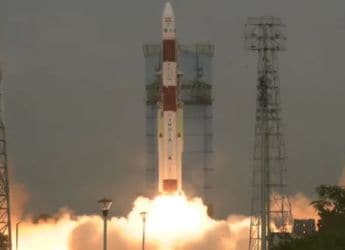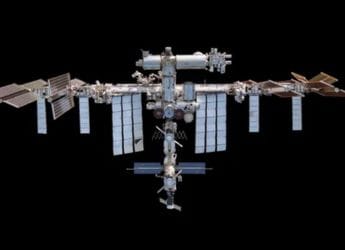- Home
- Cryptocurrency
- Cryptocurrency News
- Vitalik Buterin Shares His Take on Algorithmic Stablecoins and Their Future
Vitalik Buterin Shares His Take on Algorithmic Stablecoins and Their Future
Buterin thinks stablecoin's need a back-to-basics approach for success in the future.

Photo Credit: Devcon 2018
Vitalik Buterin doesn't think all algorithmic stablecoins are inherently problematic by design
Ethereum founder and crypto enthusiast Vitalik Buterin recently shared his two cents on algorithmic stablecoins and their future adding that they should be scrutinised on the basis of how they fare under extreme market conditions, and whether they can safely wind down when hype falls away. Despite the recent collapse of UST and LUNA, which knocked UST from its $1 (roughly Rs. 77) peg and wiped billions from the market, Buterin argued in an essay that automated stablecoins can make sense while criticising exorbitant returns offered by those "doomed to collapse eventually."
Buterin points out in his thought piece that although the UST debacle over the past month has led traders to form an opinion that algorithmic stablecoins are fundamentally flawed, some algorithmic stablecoin models are feasible and sets out his thinking as to why.
Citing an example, Buterin pointed to MakerDAO's stable token DAI and Reflexer's RAI, both of which have survived extreme market conditions as successful automated stablecoins.
Algorithmic stablecoins are inherently supported by another crypto and use baked-in formulas to regulate the price. This is different from, for example, USDC, which is a fiat-backed stablecoin supported by real dollars in the bank. The big challenge for all dollar-pegged stablecoins is finding ways to maintain their peg.
As per Buterin's blog post, the first question for investors to ask about a stablecoin is "can the stablecoin safely wind down to zero users?" For Buterin, the event of market activity for a stablecoin dropping to zero should not be a fatal blow for investors. Instead, users should be able to get a fair value for their assets.
Buterin notes that this was not the case with Terra as the network relies on LUNA, which he calls a "volcoin" or volume coin to maintain the asset's peg. Buterin painted Terra's tragedy as caused by hyperinflation from printing lots of volcoins.
"First, the volcoin price drops," writes Buterin. "Then, the stablecoin starts to shake. The system attempts to shore up stablecoin demand by issuing more volcoins. With confidence in the system low, there are a few buyers, so the volcoin price rapidly falls. Finally, once the volcoin price is near-zero, the stablecoin to collapses."
Another issue highlighted by Buterin was that Terra's Anchor protocol promised a 20 percent annual percentage yield (APY) on UST. Some investors converted their savings into UST to earn the high APY without fully understanding the risks involved. This is one reason Buterin welcomes the greater level of scrutiny on decentralised finance (DeFi).
The well-known developer says when stablecoins attempt to generate these types of returns, they can instead turn into ponzi schemes. "Obviously, there is no genuine investment that can get anywhere close to 20 percent returns per year," he says. "In general, the crypto space needs to move away from the attitude that it's okay to achieve safety by relying on endless growth."
Buterin concludes the essay by stating that even if a stablecoin passes the said parameters test, there might still be underlying issues like bugs, and governance issues that threaten the survival of the project. However, "steady-state and extreme-case soundness should always be one of the things that we check for," he concludes.
Catch the latest from the Consumer Electronics Show on Gadgets 360, at our CES 2026 hub.
Related Stories
- Samsung Galaxy Unpacked 2025
- ChatGPT
- Redmi Note 14 Pro+
- iPhone 16
- Apple Vision Pro
- Oneplus 12
- OnePlus Nord CE 3 Lite 5G
- iPhone 13
- Xiaomi 14 Pro
- Oppo Find N3
- Tecno Spark Go (2023)
- Realme V30
- Best Phones Under 25000
- Samsung Galaxy S24 Series
- Cryptocurrency
- iQoo 12
- Samsung Galaxy S24 Ultra
- Giottus
- Samsung Galaxy Z Flip 5
- Apple 'Scary Fast'
- Housefull 5
- GoPro Hero 12 Black Review
- Invincible Season 2
- JioGlass
- HD Ready TV
- Laptop Under 50000
- Smartwatch Under 10000
- Latest Mobile Phones
- Compare Phones
- Vivo Y500i
- OnePlus Turbo 6V
- OnePlus Turbo 6
- Itel Zeno 20 Max
- OPPO Reno 15 Pro Mini 5G
- Poco M8 Pro 5G
- Motorola Signature
- Vivo Y50e 5G
- Lenovo Yoga Slim 7x (2025)
- Lenovo Yoga Slim 7a
- Realme Pad 3
- OPPO Pad Air 5
- Xiaomi Watch 5
- Huawei Watch 10th Anniversary Edition
- Acerpure Nitro Z Series 100-inch QLED TV
- Samsung 43 Inch LED Ultra HD (4K) Smart TV (UA43UE81AFULXL)
- Asus ROG Ally
- Nintendo Switch Lite
- Haier 1.6 Ton 5 Star Inverter Split AC (HSU19G-MZAID5BN-INV)
- Haier 1.6 Ton 5 Star Inverter Split AC (HSU19G-MZAIM5BN-INV)

















